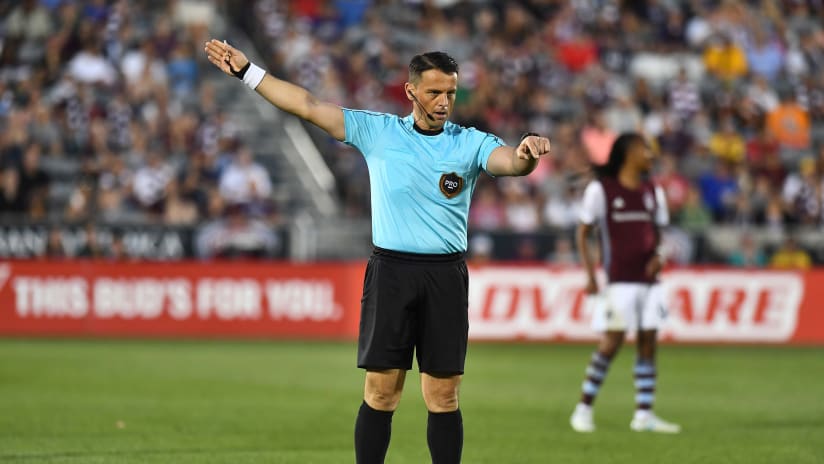Starting this weekend, MLS will officially add video reviews to its officiating process. The league has been testing out the Video Assistant Referee (VAR) process throughout the season and it has already been implemented in major tournaments, including the FIFA Confederations Cup. Here is a handy guide to help you understand the role of the VAR in a match.
The VAR’s main purpose is to avoid clear mistakes and make sure serious incidents aren’t missed by the head referee on the pitch. They use all broadcast camera angles to review plays that fall into four categories:
- Goals
- Penalty Kicks
- Direct Red Cards
- Mistaken Identity
The VAR cannot review a play outside of those four areas. Evidence must be clear and obvious to overturn a call made on the pitch.
When reviewing goals, the VAR can go back to the start of the attacking phase that led to the scoring chance to find any infraction that would have negated the goal.
Penalty kicks have two main areas that are reviewed. First, the VAR looks at whether or not a foul occurred that would result in a penalty kick. They then look at the attacking buildup — the same as with a goal — to see if any infraction would negate the penalty.
Direct red cards are the only ejections that can be reviewed, not second caution offenses. The VAR will review red card calls made on the pitch by the referee, or can recommend a review for a red card offense that was missed. They can also review any attacking buildup prior to a red card on a denial of an obvious goal-scoring opportunity to determine if any fouls would prevent the red card from being given.
Finally, mistaken identity cases are only reviewed when the referee on the field has issued a caution or ejection. This is to ensure that the correct player is charged with a foul.
The procedure for these reviews is similar to reviews in other sports. If the VAR spots an infraction, they can signal the head referee on the field and recommend them to call for a review. The referee can then stop play, signal for a video review and go to the monitor down on the field. From there, they can make the call from their perspective or take the suggestion from the VAR. The decision is ultimately up to the head official.
Plays can only be reviewed during the same run of play or stoppage following the play in question. Once the ball is back in play on a restart, the referee cannot revisit an earlier call. They can halt play before the restart to allow the VAR to further review the call or take a look for themselves.
Any stoppage of play for review will be added to stoppage time at the end of the half.
Ideally, the video review process will eliminate many match-changing calls that may have been missed or incorrect. The first time you can see video review in action is on Saturday, August 5 when the Loons take on Seattle Sounders FC at 7:00 p.m. CT from TCF Bank Stadium.


